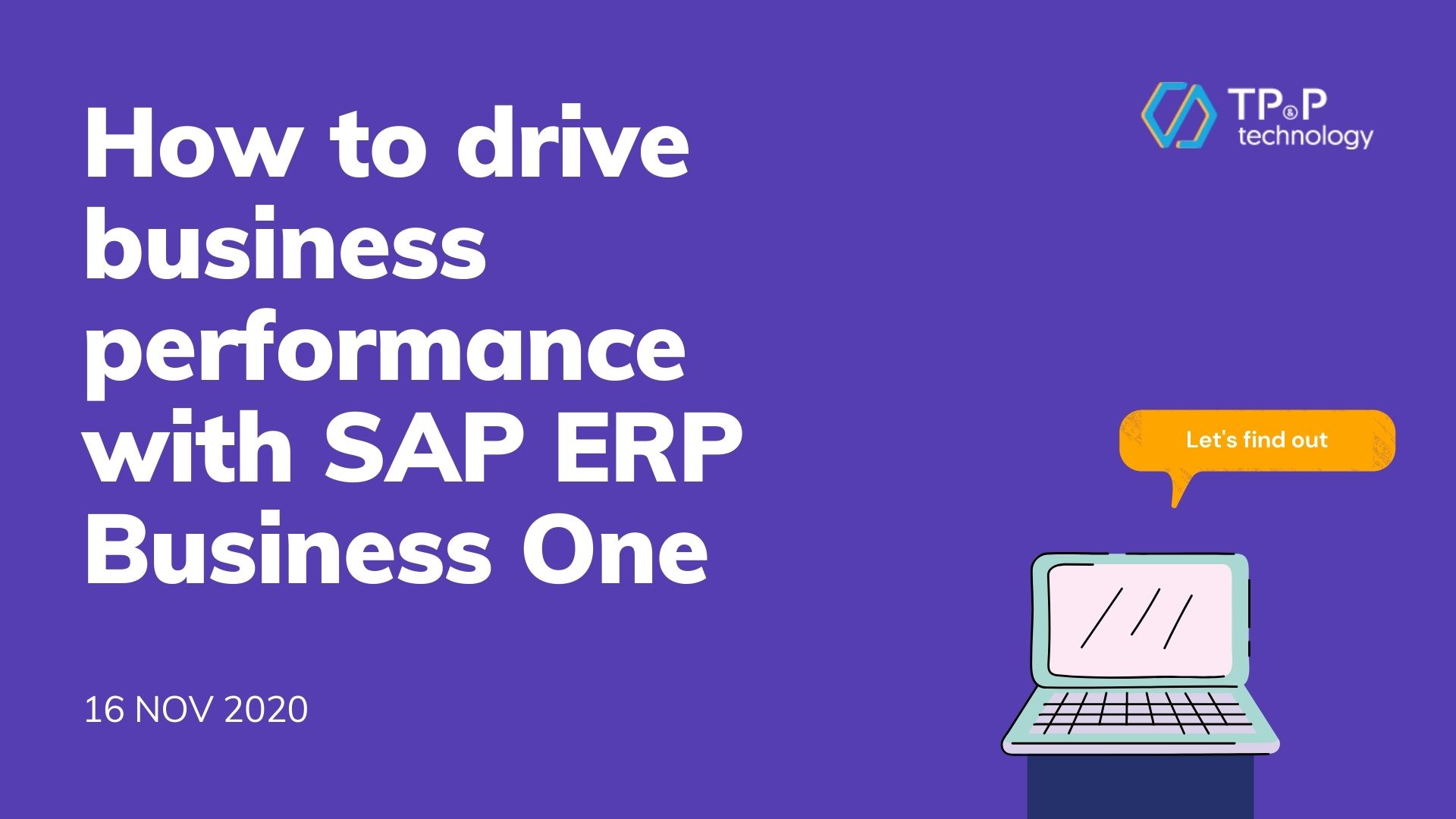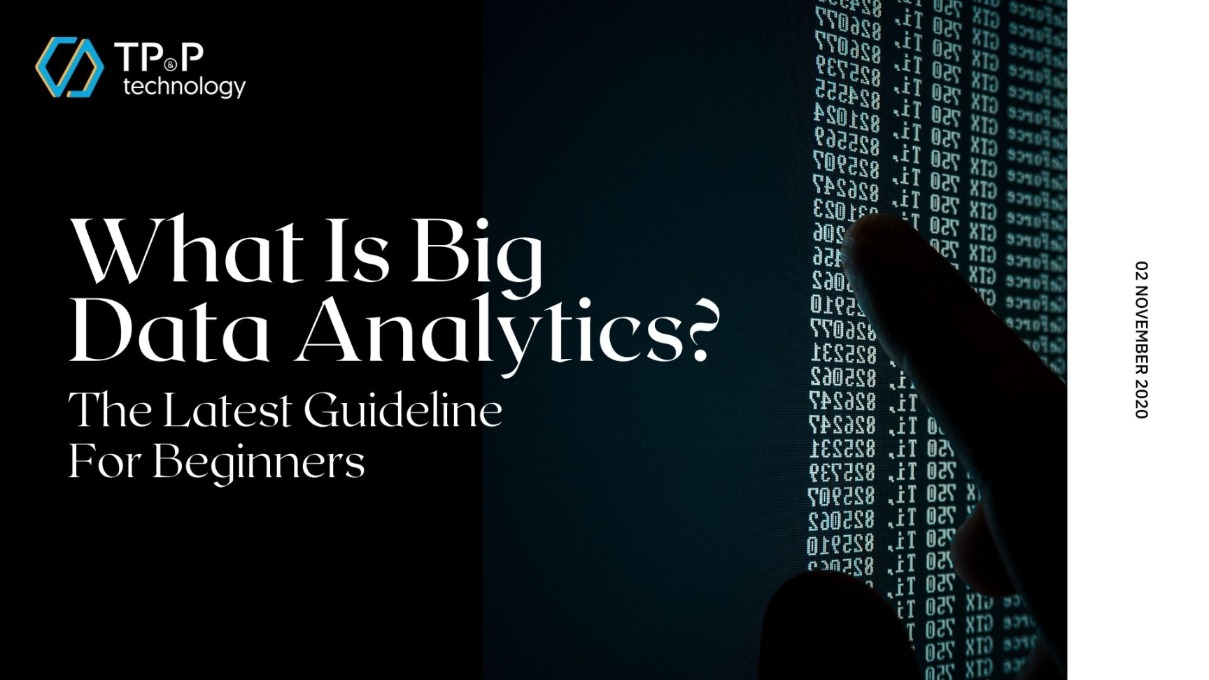
What Is Big Data Analytics? The Latest Guideline For Beginners
“Information is the oil of the 21st century, and analytics is the combustion engine”
Gartner’s former Executive Vice President, Research and Advisory Peter Sondergaard -
(Reference: https://www.causeweb.org/cause/resources/library/r2493)
You probably still remember watching the ultimate American sitcom Friends in your living room back in 1994. And it has been 20 later years already, but no one knows exactly what our favorite Chandler Bing-A-Ling’s job was. Let us tell you once again: Chandler Bing's official job role/title was statistical analysis and data reconfiguration.
You may wonder what statistical analysis and data reconfiguration are, and why we mention it in this article. Well, simple reason, Statistical analysts’ job is interpreting quantitative data, and designing statistical models for researching problems or questions, as well as maintaining databases and ensuring the accuracy of their data. It is somewhat similar to big data analytics, the topic that we want to discuss today, and can be viewed as a premise of big data analytics domain development.
Why did we call it a premise of big data analytics? Because 20 years ago, data used to be input manually and analyzed by employees like Chandler. Via this article, we’d like to help you understand more about Big Data technology.
You’ll expect to read about:
- Big Data Technology And Big Data Analytics Basic Concept
- Big Data Analytics Components
- Challenges and Opportunities
- Why Is Big Data Analytics Important?
- Its applications
- Top big data analytics company

Big Data Technology Basic Concept
What is big data exactly?
Back in the day, data was generated manually by workers. But with the establishment of Forum, Blogging, and various social media platforms such as Myspace (2003), Facebook (2004), and Youtube (2005), etc, we started to generate data by ourselves. Any time we sign up and post anything online, we generate new data that might be beneficial to one business. Users can generate data without help from businesses’ employees.
But now with the help of new technologies, machines also start to create new data from the outside world into the virtual world with minimal to no human interaction. For instance, satellites, programmable thermostats, other automatic input devices like barcode scanners, 2D or 3D scanners, digital camera sensors, etc. A colossal amount of data is being generated every day.
We used to bring data to processors (like CPU), but now because of the vast amount of data generated, we bring multiple processors to data, including big data platforms or data science platforms (read more about data science here)
Big data is the term used to describe the massive and complex amount of data that can’t be collected, managed, and processed by traditional dât processing tools. With new technology, these big data can be processed within a reasonable amount of time. These sets of big data include structured data, unstructured data, and semistructured data.
What is big data analytics?
Big data analytics is the practice of inspecting, cleansing, transforming, and modeling data with the goal of discovering useful information, informing conclusions, and supporting decision-making.
Big data analysts scrutinize these large data sets to discover the hidden patterns, correlations and gain insights. With help from Artificial Intelligence and Machine Learning, you can have your data analyzed and get insights immediately.
Big data analytics supports organizations to have control over their data and make the most out of it like identifying new opportunities and underlying risks and problems. We’ll get more into its key components and why it is important later.
Big Data Analytics Technology Components
Roadmap and operating model: Many businesses have leveraged roadmaps to create sustainable designs for their processes and functions. This allows companies to effectively manage their data and serve customers better. In today’s landscape, the foundation of one successful business depends on customer satisfaction; therefore, a good data operating model is extremely essential.
It builds upon the business model and decides how data is being handled across all organizational processes, from data collection, data cleansing, and enrichment to data sharing and use. Having a clear understanding of data flows, all stakeholders, and technologies that are involved in each step of the data lifecycle can ensure data governance and security practices’ quality. At the same time, sparing time for more strategic and critical tasks like business analysis and decision-making.
Roadmap and operating model are used to:
- Track employee behavior and processes,
- Validate the quality of KPIs
- Establish strategies and tactics to achieve business goals, mission, and vision.
Data acquisition: Data acquisition in big data is the “process of gathering, filtering, and cleaning data before putting it in a data warehouse or any storage solution”.
The acquisition process is often governed by four factors: volume, velocity, variety, and value. The components of a data acquisition measurement system are sensors (or transducer), DAQ boards and devices, computer,s and software (application software and driver software).
Data security: As global cybersecurity threats increase, monitoring, and detecting malicious activity in corporate networks are essential. Big data security analytics is a set of the latest security tools that use a variety of correlation algorithms to recognize anomalies and mitigate the risk. Security analytics collects data through a variety of methods, such as network traffic, cloud resources, business applications, and user behavior data. It analyzes real-time data to predict suspicious activity and provide information on the latest vulnerabilities.
Data governance and standards: Data governance and standards have to meet one business's growing regulatory requirements and to obtain high-quality data. The implementation of standards and data governance is based on the following reasons:
- Improved data management’s quality
- Build a comprehensive data structure for your international property portfolio
- Establish data ownership and management
- The implementation of international audits and compliance reviews has become more stringent.
Insights analysis: Value gained through implementing analysis is known as insight. It helps businesses identify opportunities to improve your business and cope with market fluctuations. Analytics helps them gain more value from their data by discovering unique patterns and trends.
In order to make the most out of data, it is recommended that CEOs or any related stakeholders learn how to collect and interpret insights.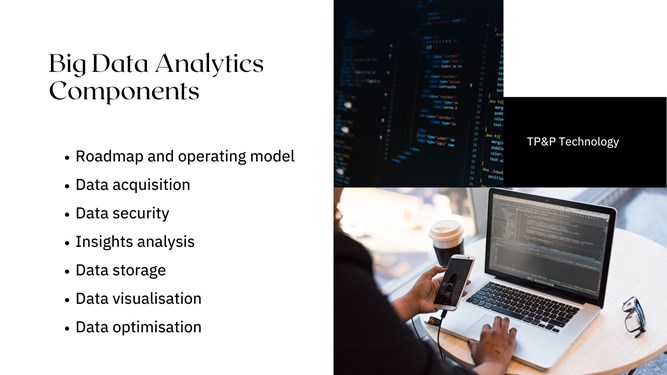
Data storage: Using computers and other devices to store data is known as data storage. This practice and data analysis is carried out using special techniques, which make it accessible for further use. Data storage can be classified into three categories according to storage products and services.
- File storage - This is a simple and inexpensive type of data storage where data is stored in files and folders on your hard drive. The hard drive stores data in the same configuration as it is viewed by users.
- Block storage - This is a more complex and expensive form of storage that is great for data that needs to be accessed and edited on a regular basis. This storage method is less scalable. Data is stored in evenly-sized chunks.
- Object Storage - Objects can be stored together with metadata and unique identifiers, thereby reducing the cost of object storage. This kind of storage is ideal for data that doesn't require editing.
Data visualization: Data visualization refers to the graphical representation of information obtained through data analysis. It helps you present your data in an efficient and interesting way, making the output interactive and easy to understand. The types of data visualization techniques are charts, tables, charts, maps, infographics, and dashboards.
Data optimization: Data optimization strategy reduces the response time of the database system to escalate the speed and efficiency when retrieving data. Data managers and analysts use optimization techniques to improve how servers access data.
Side note:
Big Data analytics helps businesses determine the most cost-effective ways to run their business. Working as big data analysts will open up your career choices since you can work in any business sector you want to practice your data analysis and communication skills.
Challenges And Opportunities Of Adopting Big Data Technology
Like any other technology implementation, there are challenges and opportunities, below are 6 challenges and 10 opportunities when adopting big data technology
Challenges
- Insufficient understanding and acceptance of big data: when there is a lack of understanding of what big data actually is, what values it can bring to the table, what infrastructure is required, there is a high chance that one company can waste a lot of time and money on things they don’t really know how to use.
- Confusing a variety of big data technologies: Apache Hive, Apache Storm, Hadoop, Cassandra, etc, there are so many big data technologies available in the market. Which one is best for you? Do you need Hadoop MapReduce’s speed? Should you consider storing data in Cassandra? How about HBase? Without a clear view of what you need, it's like looking for a needle in a haystack.
- Paying loads of money: Big data adoption itself requires lots of expenses, which is human resource excluded. Despite the needed framework being open-source, you still need to pay for new hardware, development, setup, maintenance, hires (administration and developers), electricity, configuration, etc.
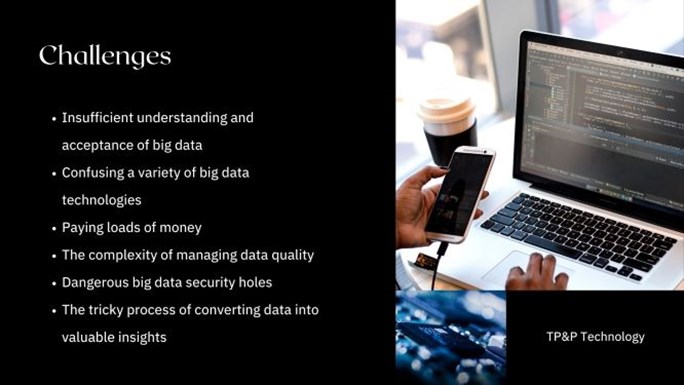
- The complexity of managing data quality: Because the data that needs to be analyzed come from many sources in a variety of formats, sooner or later any businesses will stumble upon all the problems data integration might bring. For example, an e-commerce company needs to analyze data from website logs, customer data, competitors’ websites, call-centers, etc. Big data doesn’t 100 percent truly reflect one business's operational situation, but it is essential to analyze it and strive to control its reliability.
- Dangerous big data security holes: When adopting big data, businesses face security issues, this, we will discuss in another article. But there is a potential presence of untrusted mappers, data provenance difficulties, absent security audits, etc.
- The tricky process of converting big data into valuable insights: Without the capacity to gain accurate information about one person’s interest, businesses can lose loyal customers and potential customers to their competitors. Data and observations can be critical parts of creating insight but without deep thinking to craft, creativity, and persistence, businesses turn out to waste the resources they have.
Opportunities
- Enhanced information management: With big data technology, businesses can make the most out of it since it allows them to increase their ability to discover new information, access to the data sets among all departments, as well as see all data sets that are not being used.
- Increased operations efficiency and maintenance: Via big data and big data analytics, businesses can make better and more accurate decisions, improve productivity, and optimize services.
- Increased supply chain sufficiency and transparency: Big data can improve supply chain visibility and transparency in real-time.
- Greater responsiveness: Because companies gain more data, they keep up with the current market trends and conditions. This results in enhancing greater responsiveness.
- Enhanced product and market strategy: Big data analytics allows a business to understand its customers better, increase customer segmentation, make room for better scalability and mass personalization.
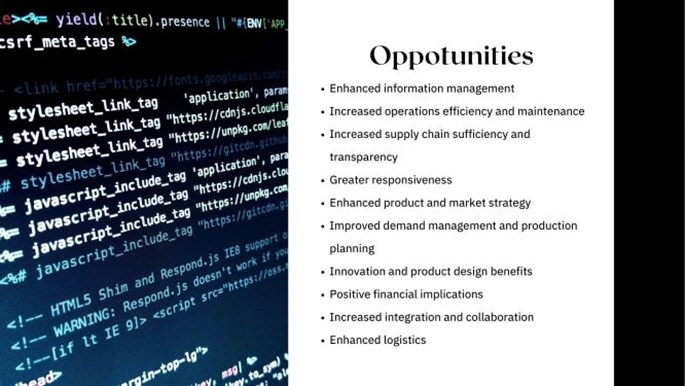
- Improved demand management and production planning: With big data technology, more insights are provided for product launch and release plans.
- Innovation and product design benefits: A wide range of data streams can support innovation and product design.
- Positive financial implications: If Big data technology is used wisely can reduce long-term cost, improve the ability to invest in other businesses’ tasks.
- Increased integration and collaboration: This new technology enhances integration and collaboration capabilities, especially in the supply chain industry.
- Enhanced logistics: Big data enables product traceability, which leads to lead-time reduction, real-time rescheduling, route planning, etc.
Here are just 10 of the many opportunities we can gain when adopting big data.
So how is big data analytics important?
Now that we have revealed to you some challenges you might face and opportunities you might identify on the way of adopting big data and big data analytics, let’s look closer, and get a more general scenario where you can see the importance of adopting big data.
The Director of Research of the Institute of Internal Auditors (IIA) conducted an interview with more than 50 business leaders to understand how they used big data. Here are three significant value big data brings:
- Significant cost reduction: Big data tools like Hadoop and Cloud-based analytics are being used by many big companies, including Yahoo! Inc, and Facebook. In 2008, Yahoo claimed that it was the world’s largest Hadoop production application. They run on a more than 10,000 core Linux cluster and produce data that is used in every search query until now.
- Escalate the decision-making process: Like mentioned above, big data analytics tools can speed up the process due to its ability to process data in a reasonable amount of time. Data can be analyzed almost immediately leading to better decisions made by business leaders.
- Improve new products and services: Many insights can be generated through analytics, therefore, customers can have what they want. More companies are creating products and delivering services that customers need.
Big Data Technology Applications
While big data analytics can benefit many industries, we cannot not mention the critical big data analytics’ application in the healthcare industry.
While adopting such data infrastructure cannot prevent an unforeseen epidemic, pandemic, endemic, and outbreak, it can help detect the illnesses in an early stage so that health authorities can come up with the prevention plan on a global scale accordingly. Data can also assist the practitioner to identify the most effective treatments. This results in many countries being well-prepared and ready to halt emerging viruses before they even have a chance to reach the pandemic scale.
Let’s look at the COVID-19 pandemic: only if we had known about the coronavirus’s transmission, how long it would take for symptoms to appear, we could have prevented it before it reached peak infection. Countries facing early signs could be armed with knowledge around the best practices to take in treating infected people. Personal protective equipment could have been prepared beforehand, people could have filled up their larders much sooner, and most importantly, converting buildings into makeshift hospitals with adequate beds before the illness hit the pandemic level.
Big Data Analytics Company
If you’re thinking of adopting big data technology, TP&P Technology should be on your shortlist. As a top IT service provider, we’re not only offering the software development service but also giving consulting services to those who need it.
We’re proficient in digital transformation including implementing Big Data Analytics, Custom Software Development, Artificial Intelligence/Machine Learning, Cybersecurity Services, Blockchain Development, etc.
Talk to one of our consultants now to know more about what value we can bring to the table.


